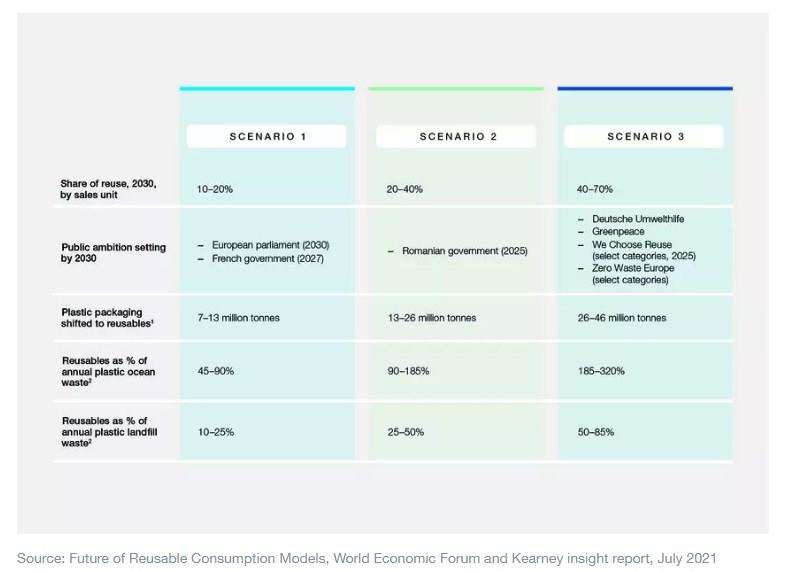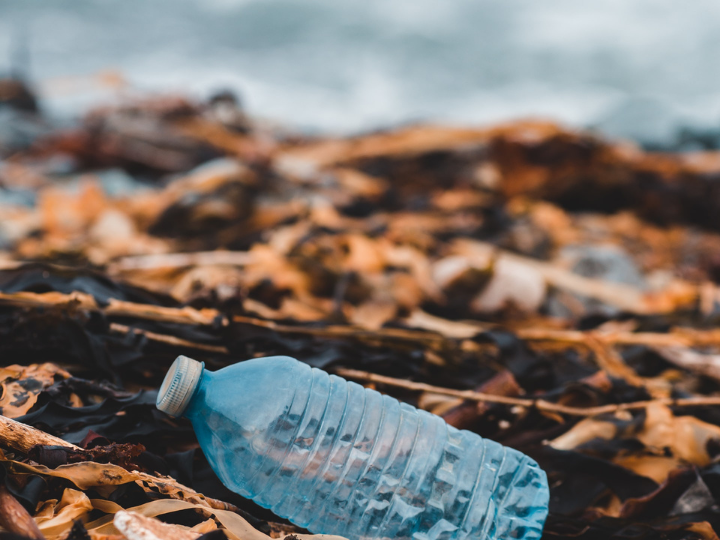by Zara Ingilizian, Mayuri Ghosh and Beth Bovis*
The amount of waste generated by humanity represents a growing threat to our ecosystems and economies. The output of solid waste has grown from 25 gigatons (yes, that’s 25 billion tons) in 1990 to 86 gigatons in 2020 – and a projected 140 gigatons by 2050.
This expansion exceeds population growth, and is the result of a disposable-goods system that combines short-term use and long-term environmental harm. Half of all plastic production is for single-use items. To get a sense of how ephemeral a “single use” can be, consider that the average working life of a disposable plastic shopping bag is just 15 minutes.
The Future of Reusable Consumption Models insight report, published by The World Economic Forum’s Future of Consumption Platform in collaboration with Kearney, highlights innovative solutions. It finds that the key will be to move from a “linear” waste economy – in which a product’s existence follows a one-way line from manufacture to usage to the landfill – to a “circular” economy in which items are reused or recycled indefinitely. The report shows that reuse models are not only viable, but also capable of generating added value across the economy.
At the moment, only a fraction of our plastic waste – 14%, according to a report by the World Economic Forum and the Ellen MacArthur Foundation – gets recycled. Only 2% is “effectively recycled”; that is, converted into an equally useful item. Most recycled plastic is “downcycled” into something less useful than before, and is only recycled once before heading to a landfill or the ocean. Instead of devoting resources to waste removal and treatment, we need to focus on eliminating waste.
The Future of Consumption Platform aims to forge responsible models of consumption that are equitable, promote societal wellbeing and protect the planet. Its Consumers Beyond Disposability initiative brings together leading private- and public-sector organizations committed to offering consumers sustainable and affordable alternatives to single-use products.
The world in a coffee cup
Reuse shifts value, adding it toward the end of the life-cycle of a container (in sales, returns and refills) and away from the beginning (material extraction, manufacturing). This shift creates opportunities for companies involved in the production of new materials, sanitization, refilling, branding, and retail.
To get a sense of how such shifts might play out in the real world, we analyzed the profit impacts of a returnable coffee cup. Even in the sectors that initially lose value, there are opportunities to gain value at other points in the reuse process. At a given point in scale, governments, sorting/sanitization and retailers received the most added value. Manufacturers of disposables and private waste management responsible for disposing of them bear the burden of lowered demand.
Pioneers of reuse
Companies large and small are already taking advantage of the potential of reuse to create value. Loop, a subsidiary of TerraCycle, has established partnerships with leading retailers to allow customers to borrow brand-name packaging, which is fully recyclable after 20 to 100 uses. As of December 2020, Loop had enlisted over 100 brands globally and offered over 400 products.
Chilean startup Algramo has recently broken into the US market with its innovative refill-on-the-go distribution model. After a one-time container purchase, a customer may refill a range of liquid cleansers from dispensing machines at participating stores. Producers signing onto the program include market-heavyweight brands, such as Clorox and Pine-Sol.
Governments and NGOs worldwide are partnering with companies to demonstrate reuse models. One example is the New Plastics Economy Global Commitment, organized by the Ellen MacArthur Foundation. This unites businesses and governments in the effort to reduce plastic waste and pollution at the source. Corporate signatories to the commitment include companies representing 20% of all plastic packaging produced globally.
Other partnerships operate at a city level. In Seoul, Share Hub connects municipal agencies, companies, and residents who can exchange knowledge, present initiatives, and connect with resources to advance circular solutions. ReLondon is a partnership between the mayor of London and the city’s boroughs that offers grants and consulting advice to businesses seeking to implement reuse programs.
A matter of scale and commitment
Large-scale reuse programs attain a level of value that a low-scale approach simply cannot match. Achieving that scale will require both ingenuity and commitment from a variety of market participants. The public sector can lower the barriers to companies scaling up these initiatives by developing the necessary infrastructure, establishing regulatory standards and forming public-private partnerships.
The report lays out three possible scenarios for the development of reuse by 2030. Any of these scenarios would represent major progress over the status quo. In scenario 1, at least 10% of all packaging would be shifted away from single-use and toward reusables – the equivalent of at least 7 million tonnes of plastic. In scenario 3, as much as 26-46 million tonnes would be shifted away from disposables, and plastic waste would be virtually eliminated from our oceans.

Companies, government agencies and NGOs urgently need to consider these scenarios and take tangible steps toward realizing the business opportunities they open up. The coming years could usher in a new age of consumer access to these new models of consumption. While this will not be easy, it would be a truly historic moment in history – as important in its own way as any of the Industrial Revolutions.
*Head of Shaping the Future of Consumption; Member of the Executive Committee, World Economic Forum and Head of Consumers Beyond Disposability, Strategy & Public Private Partnerships, Future of Consumption Platform, World Economic Forum and Partner; Leader, Global Social Impact and Sustainability, Kearney
**first published in: www.weforum.org




 By: N. Peter Kramer
By: N. Peter Kramer
